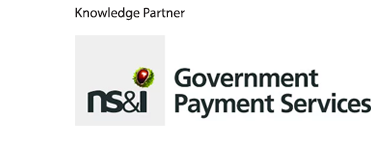The power of partnerships: outgoing US federal CIO Clare Martorana reflects on how to drive government transformation

As she leaves the US federal government, Clare Martorana reflects on the accomplishments – and frustrations – of one of the biggest technology jobs anywhere in the world
Technology in the 21st century moves quickly. When Clare Martorana first joined the US federal government in 2016, the artificial intelligence revolution had not yet begun and when she began working as the US federal CIO in March 2021, Zoom calls and Teams meetings were just becoming ubiquitous in daily life, catalysed by the coronavirus pandemic.
Such shifts illustrate how important it is for government to be at the forefront of using technology to deliver quality services. As she leaves her post, having served three presidential administrations, Martorana reflects on the changes she has overseen.
“When I arrived in government in 2016, the challenges and the opportunities were well understood but not strategically defined,” she explains of how government uses technology. “I think in the last eight years that I have spent in government, we have done foundational work to better understand – by each channel of service delivery – where we’re succeeding, where we need to improve, and where, candidly, we’re failing.”
Read more: ‘Focus on the customer is the rallying point’: US federal CIO Clare Martorana interviewed in 2023
Martorana joined the federal government initially in the Department of Veterans Affairs (VA) from the private sector in 2016 before becoming US federal CIO, an office which forms part of the White House Office of Management and Budget (OMB) and is responsible for helping the federal government use technology to make services easier for citizens and businesses, as well as saving taxpayer dollars and streamlining citizen participation.
As she departs government at the end of the Biden administration, Martorana has set out some key accomplishments in an impact report. Areas of progress include strengthening cybersecurity, advancing technology modernisation in government, leveraging artificial intelligence, and improving digital service delivery.
A lot of this work “started before I joined”, Martorana says. “There was a lot of momentum in the Obama administration that then carried forward into the Trump administration, then into the Biden administration, and now back to the Trump administration.
“We’ve done a better job of understanding the landscape and there’s still an enormous amount of work ahead of us.”
‘The magic formula’: Creating partnerships for success
Thinking back, Martorana highlights that her work as federal CIO began in the midst of both the COVID-19 pandemic and the Solarwinds cybersecurity incident, which she describes as “one of the most catastrophic cybersecurity events of my life”.
“That was an incredibly challenging time – and then you fast forward all the way to me exiting my time in government, and we are now living in the time of AI. So that pendulum swing has been quite dramatic, just even in these four years [as federal CIO].”

On how government can most effectively address this wide range of challenges, Martorana says building partnerships is key – both across the US federal government and internationally.
The impact report highlights “the power of partnerships” as key to building the seamless integrated government services of the future that citizens expect.
“Imagine a day when a member of the American public can use their mobile phone to access everything they have in flight with the federal government – a small business loan application, the status of a tax refund, or their estimated Social Security retirement benefits. The process is easy, convenient, secure, fast and works for people of all abilities – just like the consumer experiences we have every day outside of government, from online banking to ordering food delivery.”
This is not only possible but the Biden administration has been helping to make it happen, the report says, and Martorana stresses that while modernising government technology is a marathon, not a sprint, large distances have already been covered.
Key elements of progress include putting the policies in place to deliver a simple, seamless and secure digital experience across the government, with a particular focus on better digital delivery through improving the quality of online services.
“I think it has been a real team effort,” she says. “The impact report really highlights some of the areas where we’ve had great impact, and I think it also signals the direction that teams in the future need to continue to focus on and progress.”
Martorana says the key lesson from her time in government is the need to learn from success to help create shared solutions and encourage best practice.
“I think the key is learning from the leaders,” she explains. “There are agencies and parts of government that are extraordinarily sophisticated, very well-funded, very well-managed and delivering extraordinary services using the most modern technology. Our colleagues at the Department of Defense or colleagues in the intelligence community are oftentimes leading in some of these areas.”
Sharing these successes with colleagues across the federal government working on technology and with wider stakeholders who have oversight or interest in the work of government is vital.
“That’s the magic formula,” Martorana says: “Making sure that we’re learning from the leaders: we’re getting those lessons, we’re adjusting quickly to the environment that we’re in, and we’re able to execute with a level of excellence and speed.”
Funding the future
The point on funding is a critical one, and Martorana admits that the budget process for digital transformation in government is “challenging, full stop” due to the political brinkmanship that often plays out in funding decisions in the US Congress.
But she says progress has been made through the Technology Modernization Fund, which provides incremental, iterative funding, tied to delivery of milestones, to help government agencies undertake technology transformation schemes.
To date, the TMF has allocated over $1bn for 69 investments across 34 federal agencies, according to the impact report, with a focus on helping government achieve that vision of easy, convenient, secure and fast government services. Martorana says this has been “an incredibly powerful vehicle for us to be able to drive change”.
The TMF was one of the successes highlighted in Global Government Forum’s research with US federal government CIOs. The From Lagging to Leading: The Opportunity for a Breakthrough in U.S. Government Digital Service Delivery study is based on interviews with 13 members of the US federal government’s CIO Council, and offers a blueprint for the United States to reclaim global leadership on digital government.
The recommendations cover how to build upon the success of the Technology Modernization Fund; steps to increase the federal CIO’s authority to drive digital modernisation; how to transform the technology workforce to get the federal government working differently; proposals to support new CIOs and create a CIO talent pipeline; and action to pare down the accumulated legislation that holds back transformation.
Read in full: From Lagging to Leading: The Opportunity for a Breakthrough in U.S. Government Digital Service Delivery
Martorana, who was interviewed for the research, said that the success of the TMF comes from using best practice from the private sector.
“We look at our investments from a technical standpoint. We have engineers and subject matter experts across all technical domains so that we’re really interrogating those investments like we’re spending our own money. We’re using that same private sector methodology and then making sure that we are both investing in ideas that need to happen, but also that the teams that we’re funding are capable of actually delivering against the milestones. So that is a really important part of the way that the Technology Modernization Fund is designed.”
Again, collaboration is crucial – partnerships between Martorana’s office and agencies ensured projects were delivered and that insight “from others in the ecosystem that have already been on the journey” was shared.
Bids into the TMF also helped Martorana and her team identify the key areas where government needs to invest.
“We’ve reviewed hundreds of proposals, so the depth and breadth of the demand signal that we’re seeing from those gives us a really good understanding of where – across the ecosystem – we are trying to solve the same problem in multiple agencies at exactly the same time,” she says.
Proposals for investments in customer relationship management systems, for example, help indicate areas where investments might be needed. “That’s an opportunity for us to look at how we might deploy shared services that would benefit everybody.”
It also highlights areas where greater cooperation is possible: if several agencies were bidding for funding in one area, Martorana’s team connected them together. She explains: “They can share their customer experience with each other, they can share their technical evaluation, they can share their security controls, they can share that information and go on that journey together. Where we’ve been able to match teams up, they’ve benefited from the work that the other agency is doing.
“Those are areas where the Technology Modernization Fund has been powerful, has been impactful, and if it continues to get funded, will be the channel that the next administration will be able to drive some of this change in a more fast-paced and agile way, rather than waiting for the multi-year budgeting process to go on its slow path.”
Building international bridges
Martorana also worked to build international partnerships as US CIO. International government digital leaders were hosted at the White House for discussions on technology transformation ahead of last year’s GovernmentDX conference in Washington DC, organised by Global Government Forum.
“I think the key is that we’re all trying to solve the same problems,” says Martorana of the value of discussions with her international peers. “Our constituent groups are different [but] we’re all doing exactly the same thing. We want to make sure that people can access services simply, seamlessly, but very securely. So we’re all fighting that same exact challenge of making sure that we are safeguarding the data, but also utilising the data in a way that could provide additional benefit – to design products and services that can delight a customer.”
Martorana took part in the GovernmentDX conference that brought together global government digital leaders from around the world to share insight and intelligence on how to use technology to drive innovation and deliver high-quality public services.
The conference will return this year as Government Service Delivery, focused on how to deliver innovation in government. The event will be held at Walter E Washington Convention Center, Washington DC on May 13-14, 2025. Find out more and register your interest here.
Read more: Takeaways from the 2024 GovernmentDX conference
Alleviating bottlenecks and ‘being in the arena’
Reflecting on her time in government, Martorana says that it has been an extraordinary journey – with both triumphs and frustrations.
“I have met phenomenally talented people along the way. I have been frustrated – in every way, shape and form – by the limitations that are put on teams, including the budget process,” she says. “Knowing what the solution is to a problem, but then having to go on this long, arduous journey to complete the solution I have found frustrating, and have worked hard to try and alleviate some of those bottlenecks.”
It is easy for critics to sit on the sidelines and tell everybody what they need to do differently, but it’s “really different being on the field, being in the arena” – specifically when that arena is as scrutinised as the work of government.

You need to recognise that “you might approach a problem one way in the private sector, but when you are in government, there are operational challenges”, Martorana says. “The demand signals from the public are, ‘you need to transform the way that I interact with the government’, and the first step of that journey is modernising the basic operating environment that we run our agencies on in government.
“That’s a journey that the next administration certainly is going to have to tackle. But the combination of doing that foundational work and doing the work of being good partners in the ecosystem, I think, is the formula for success.”
And her advice as she passes on the baton to the next administration? Make the most of opportunities to share with international peers.
“We develop an extraordinary amount of this technology domestically, and sharing it with our international partners is a really important part of our strategic opportunity as the United States.
“It’s very easy for us to put our heads down and, as I always say, shovel the coal to keep the furnace going for the day. But unless you lift your head up and are looking across the globe at the way that we’re attacking these problems, you will continue to potentially make the same mistakes over and over again. So it’s really important that you look out and learn from some of these other countries that might be smaller, but they have built coalitions, and they’ve driven technology change that has significantly benefited their population. That’s an area where we can learn.”
Global Government Forum’s Government Service Delivery conference will take place at the Walter E Washington Convention Center in Washington DC on May 13-14, 2025. The Government Service Delivery event programme unites global digital government leaders to explore tech-driven innovation for delivering high-quality public services for customers. Find out more and register to attend here.





















